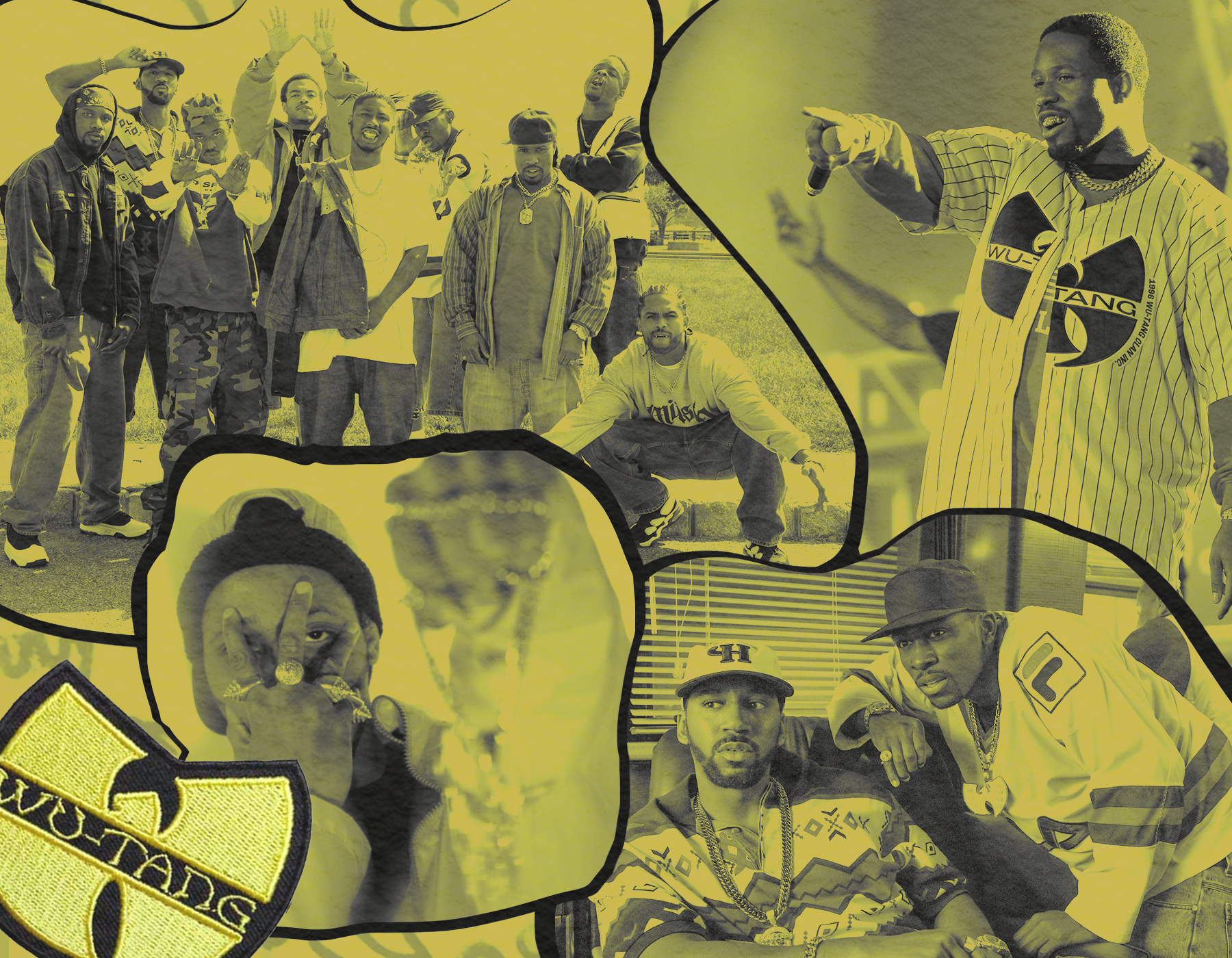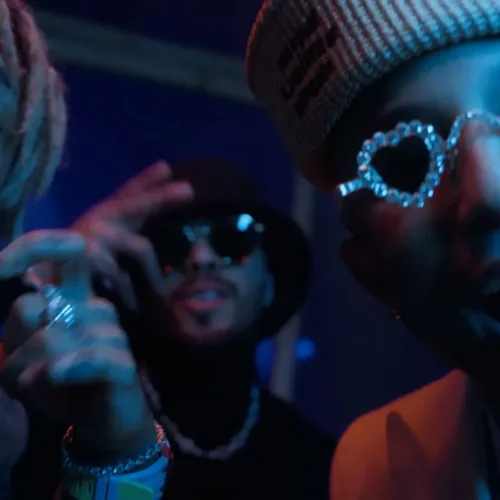The Wu-Tang Clan holds high ground within music culture, and following the legacy built from scratch by the Wu-Tang members, came Wu-Tang: An American Saga, Hulu’s three-season biopic series that lent viewers a voyage into the definitive years of the Wu-Tang Clan’s rise and journey to recognition, plus a glimpse into the wardrobe straight out of the slums of Shaolin — as they’d often rap.
With any period piece, the task of immersing an audience into a specific timeline traces back to wardrobe. For Colombian costume designer Melissa Vargas, her drive for research helped her analyze Wu-Tang’s elemental style during the ‘90s, their environment, and what their symbols of success looked like.

Costume Designer Melissa Vargas dresses an actor on the set of ‘Wu-Tang: An American Saga’(Photo by: Vanessa Clifton/Hulu)
Vargas was hands-on with Robert Fitzgerald Diggs, otherwise known as RZA, as he not only executively produced Wu-Tang: An American Saga alongside Alex Tse, Method Man and Brian Grazer, but also lived that era with his crew.
“The world knows who Wu-Tang is, and I love any kind of period project that I could do,” Vargas tells LATINA. “It was nerve-wracking at the same time because Wu-Tang is alive and well, and trying to make sure that we’re doing it [costume design] in an authentic way felt like a big responsibility to me. But I feel like I was ready to take that on.”
Vargas, with projects such as Bleed For This (set in the late ‘80s and early ‘90s), Finding Steve Mcqueen (set in the ‘70s), and the soon-to-be-released film A Thousand and One (set in the ‘90s and early 2000s) under her belt, finds her work to be an extension of her passion for history. Vargas finds endless inspiration in replicating age-defining ensembles — even if it comes with the challenge of re-creating pieces that cease to exist today.
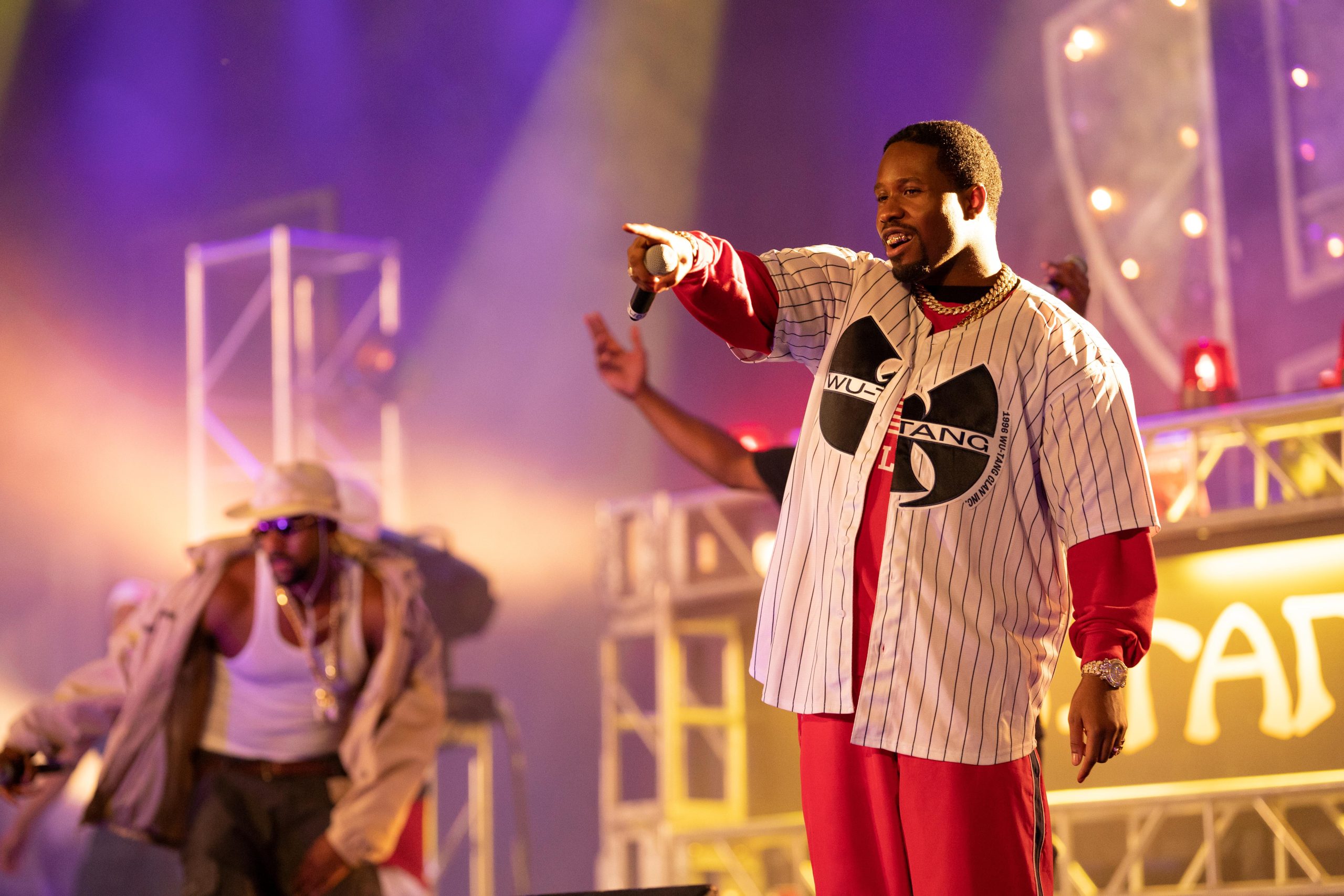
Wu-Tang: An American Saga — “Triumph” – Episode 310 — RZA pushes his musicianship to new heights as he creates Wu-Tang Forever with a studio orchestra, but the recording process strains the Clan. As tensions boil over during their biggest tour yet, RZA is concerned about Wu-Tang’s future and legacy. Ghostface Killah (Siddiq Saunderson) and Raekwon (Shameik Moore), shown. (Photo by: Vanessa Clifton/Hulu)
Heirlooms of Ralph Lauren Polo Sport, FILA, Wu-Tang memorabilia and GUESS archives embellished the actors’ wardrobes in season three of the series. The New York-based costume designer has a hefty Rolodex of private Polo collectors and vintage dealers she enlisted for the project to help procure these items, mentioning that for her and her costume team, these rare pieces were treated like gold, protected as they went from one location to another, with all eyes on the rented items. Her trusted leather wholesaler Daniels Leather helped bring a couple of Vargas’ sketches to life. Vargas frequented vintage stores scattered throughout New York City such as Metropolis Vintage and L Train to source for the actors’ wardrobe. When it came to crafting samples patched with the Wu-Tang Logo, even those luminary features of Wu-Tang merchandise present in the series were designed with Power’s guidance, Co-founder and Executive Producer of the Wu-Tang Clan.
“[The Wu-Tang Clan] were all about their branding, which is not necessarily the most common thing for artists at that time,” Vargas says. And since they were very clear about how they wanted to brand themselves, Vargas mentions that had a lot to do with Power as well, as he still runs all of the Wu-Tang merch. “Replicating these pieces, they were all about promoting themselves as a group. One of the pieces that stood out to me the most were these leather jerseys, so I worked with [Daniels Leather] to make the base for us and cut it. I gave them a sample to copy and then our tailor cut out each letter and stitched it on perfectly and we got it done.”
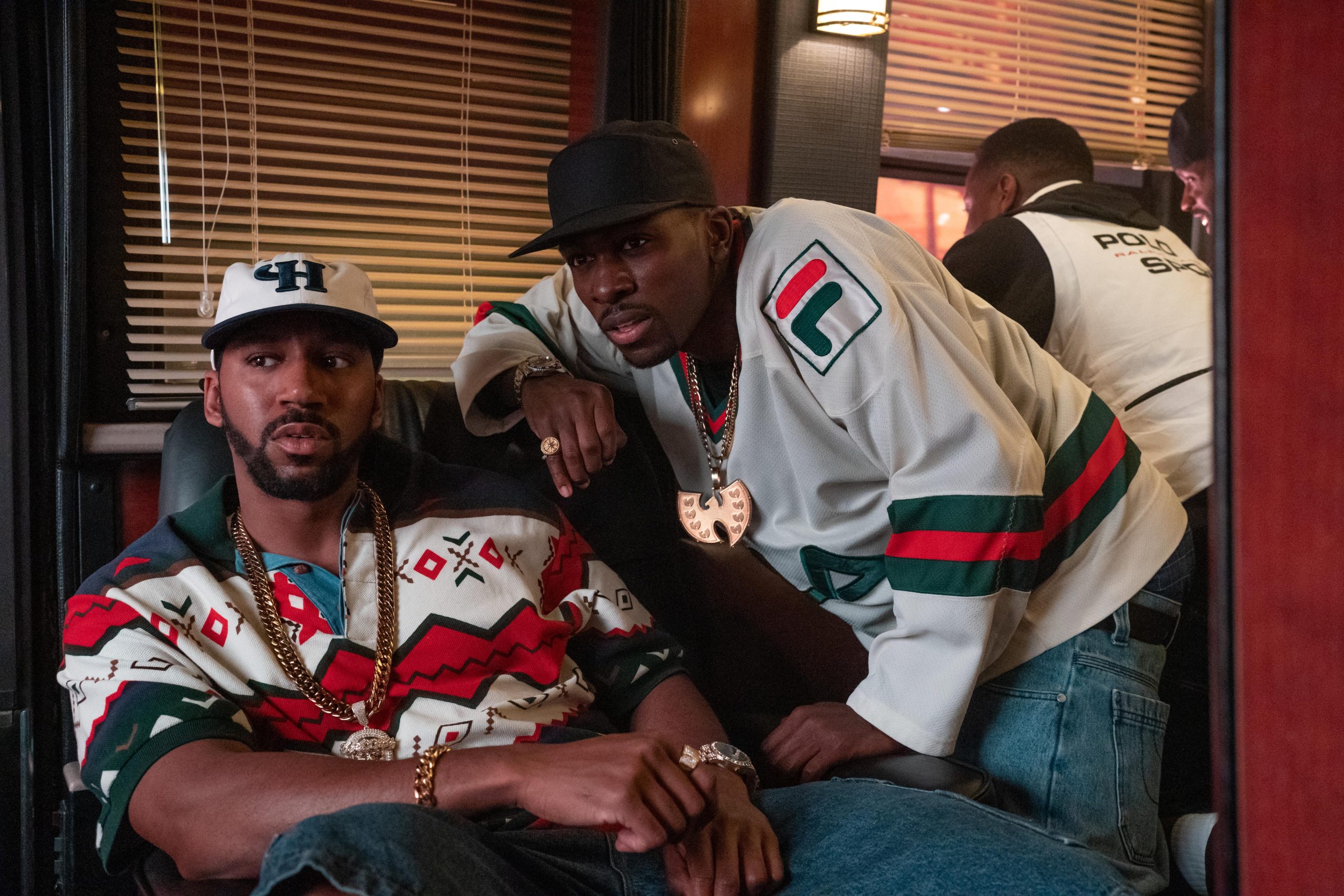
Wu-Tang: An American Saga — “Daytona 500” – Episode 304 — The Wu-Tang Clan goes on a tour of the East Coast as we follow what happens between the shows on the tour bus. The guys quickly discover that living on a bus together might not be all fun, as they’re forced to deal with their problems face-to-face. Ghostface Killah (Siddiq Saunderson), Inspectah Deck (Uyoata Udi) and Raekwon (Shameik Moore), shown. (Photo by: Vanessa Clifton/Hulu)
Branding aside, the characters’ played with their Wu-Tang Clan personas through a loosely fit wardrobe and heavy accessorizing. “The jewelry was a really big deal. When you see photographs of them in 1992, they’re very different from the photographs of them in 1996 — when they’ve had their success. [I was looking at] what that meant to them, and what are the things that they coveted or were aspiring to have. And I believe the jewelry was one of them that culturally I think is very important.”
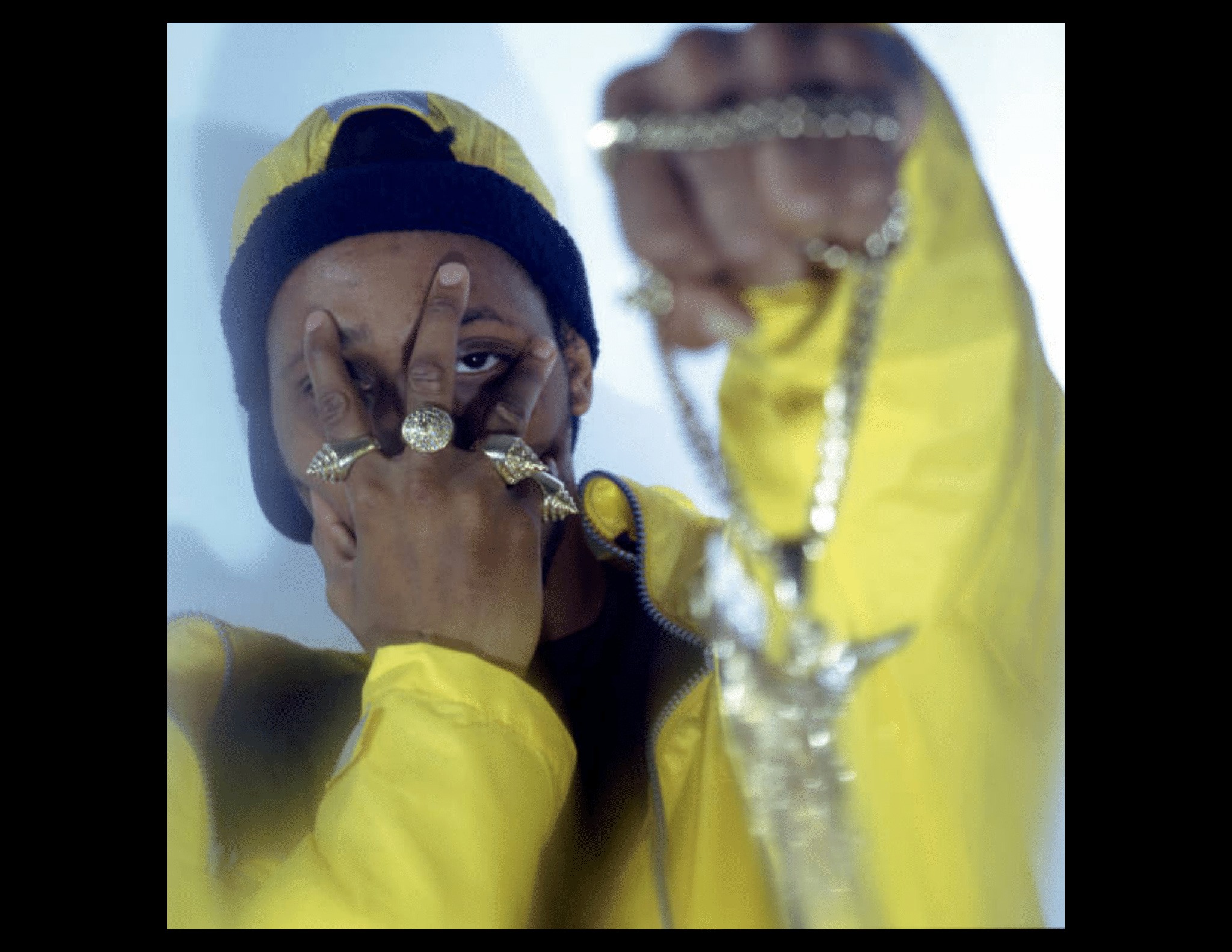
GETTY
Throughout season three Vargas used jewelry as a symbol of transition for the Wu-Tang Clan, from their struggles to their achievements, to their upswing into fame. Vargas went back to her collection of photographs, especially RZA’s original photo shoots with his signature spike rings, to design the signatory rings with jewelry designer Anthony Lalwani, who made molds of the design above.
In this final honorary season of Wu-Tang: An American Saga, there was a clear understanding of who these characters were, thanks to Ashton Sanders’ portrayal of RZA, Dave East as Method Man, TJ Atoms as Ol’ Dirty Bastard and more. Yet, many episodes were a spin-off of RZA’s dreams of what the journey of certain characters’ writing processes looked like across each of their albums, Vargas says.
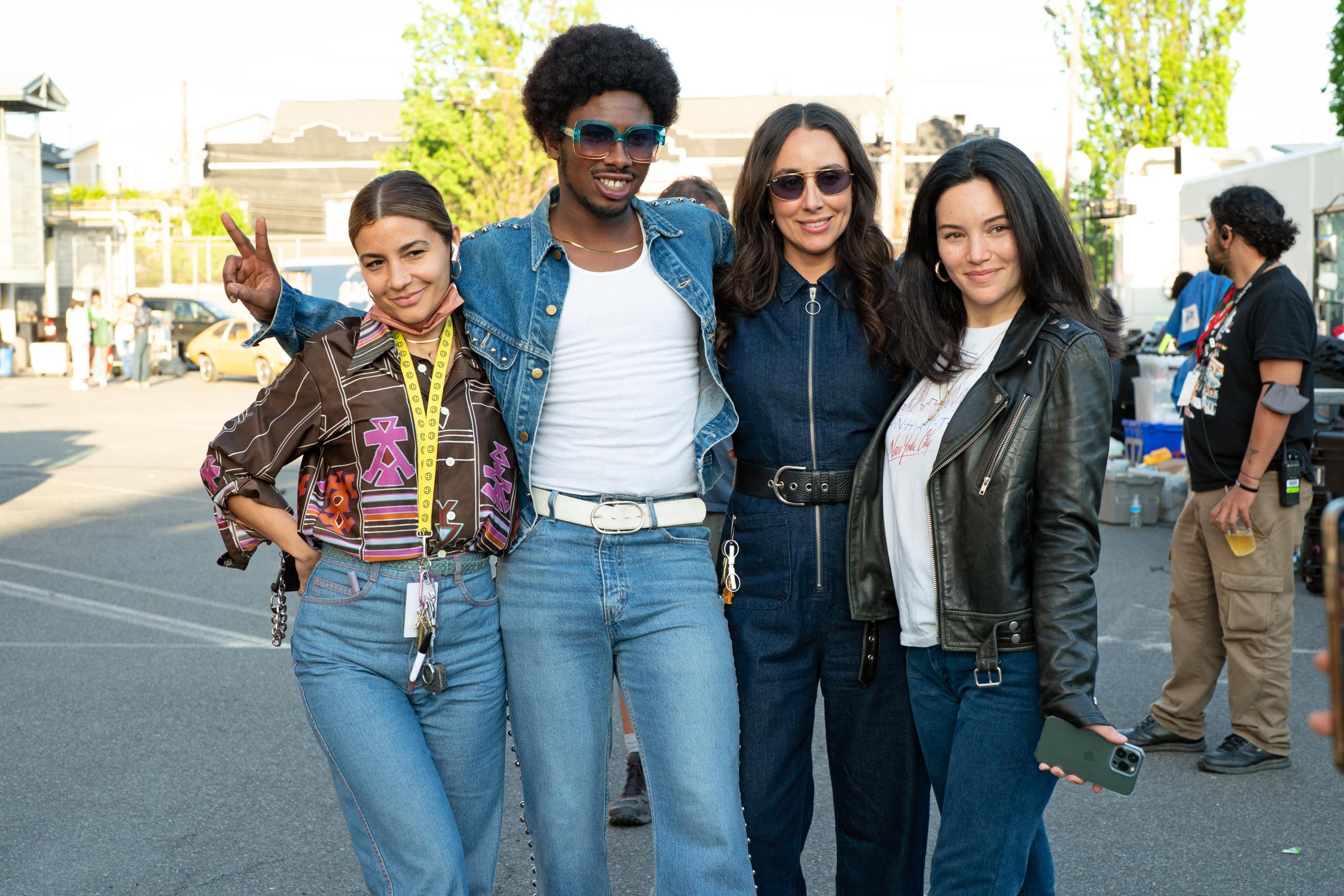
From left to right, Aliana Galán, Assistant Costume Designer, TJ Atoms, portrayed as Ol’ Dirty Bastard, Gina Javaheri, Wardrobe Supervisor, and Melissa Vargas, Costume Designer.
Vargas not only intentionally carried out the impact of the Wu-Tang Clan’s style choices, from their ill-fitting denim, oversized leather jerseys emblazoned with the signature Wu-Tang ‘W” and personality-stamped jewelry pieces, but she also got to explore her connection to New York style that she formed by growing up in the boroughs. She tells LATINA, in New York, inspiration and individuality are everywhere. “Even though they are a big group, they all don’t dress the same — each character has their own individual style, and I wanted that to be very present in the series. I related that to being a New Yorker and finding your own style, and what that means over time, and how your experiences will influence that.”
Chelsea Avila is a freelance contributor for LATINA based in Queens, New York. She covers fashion and beauty editorial.
